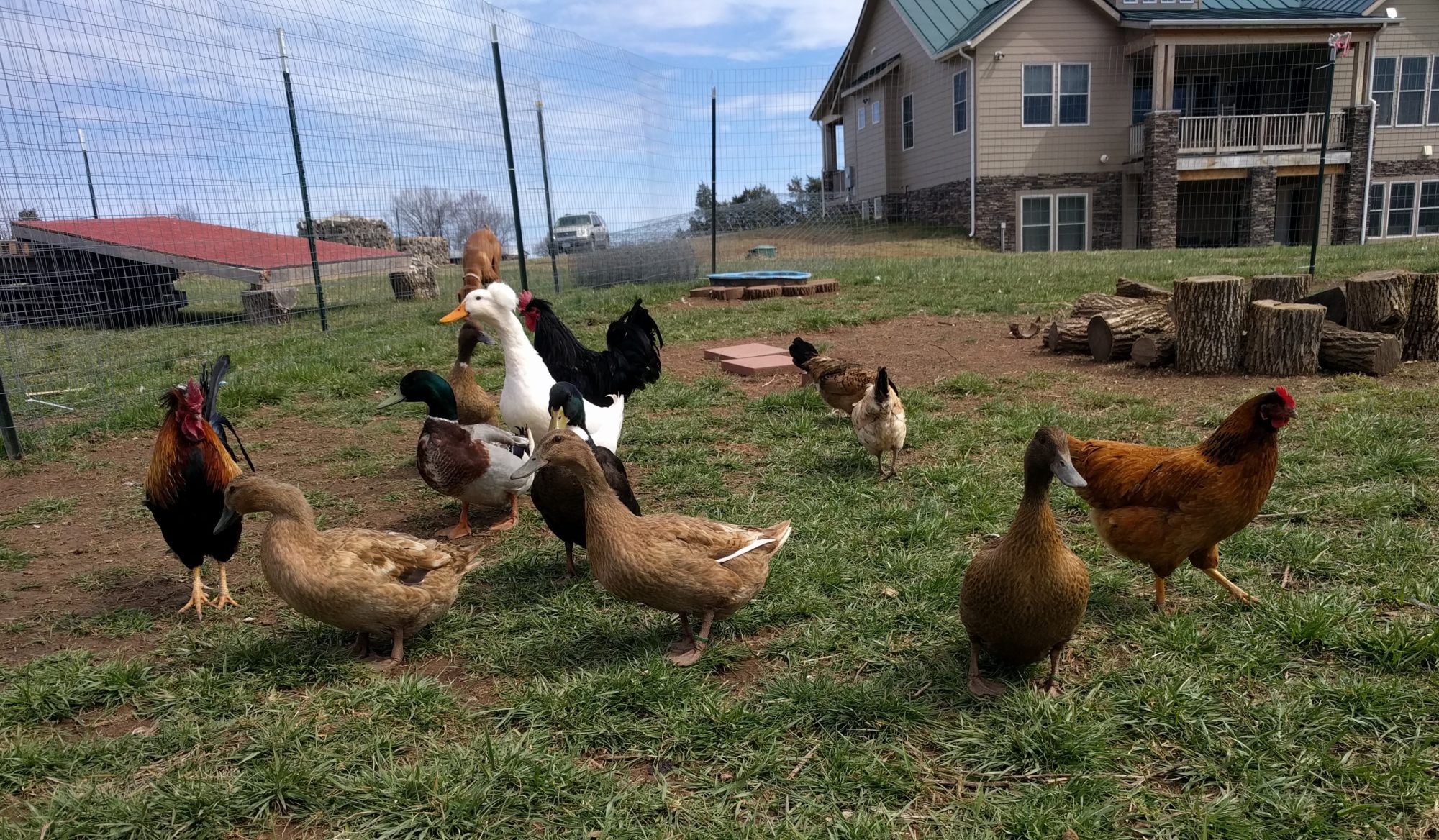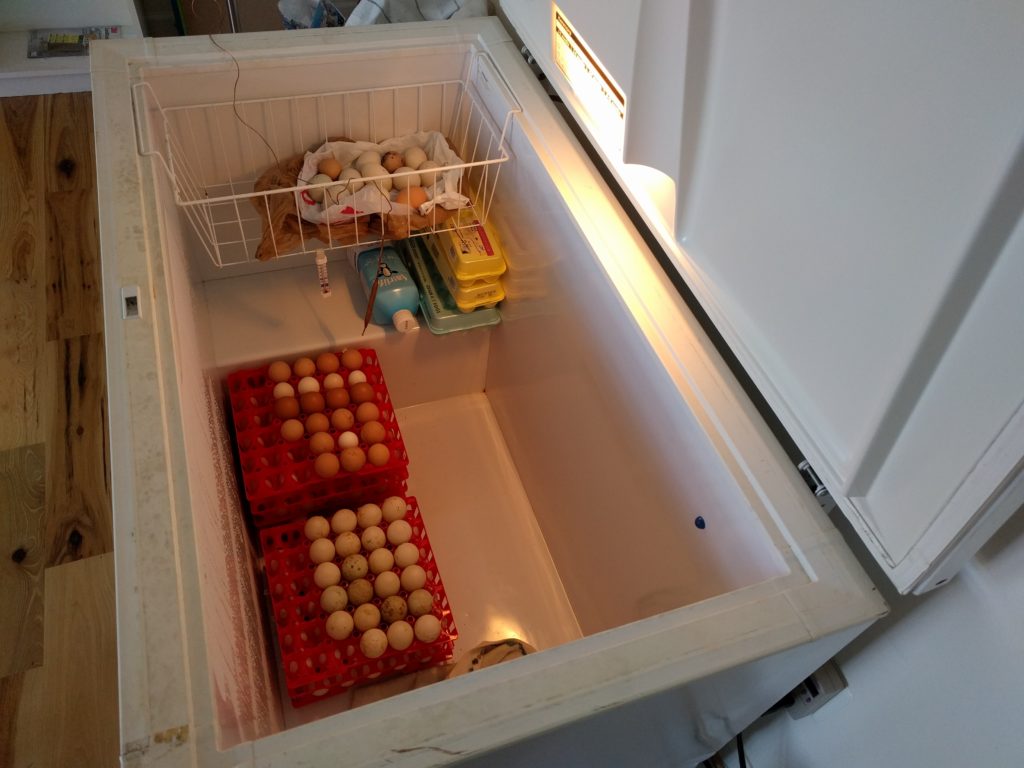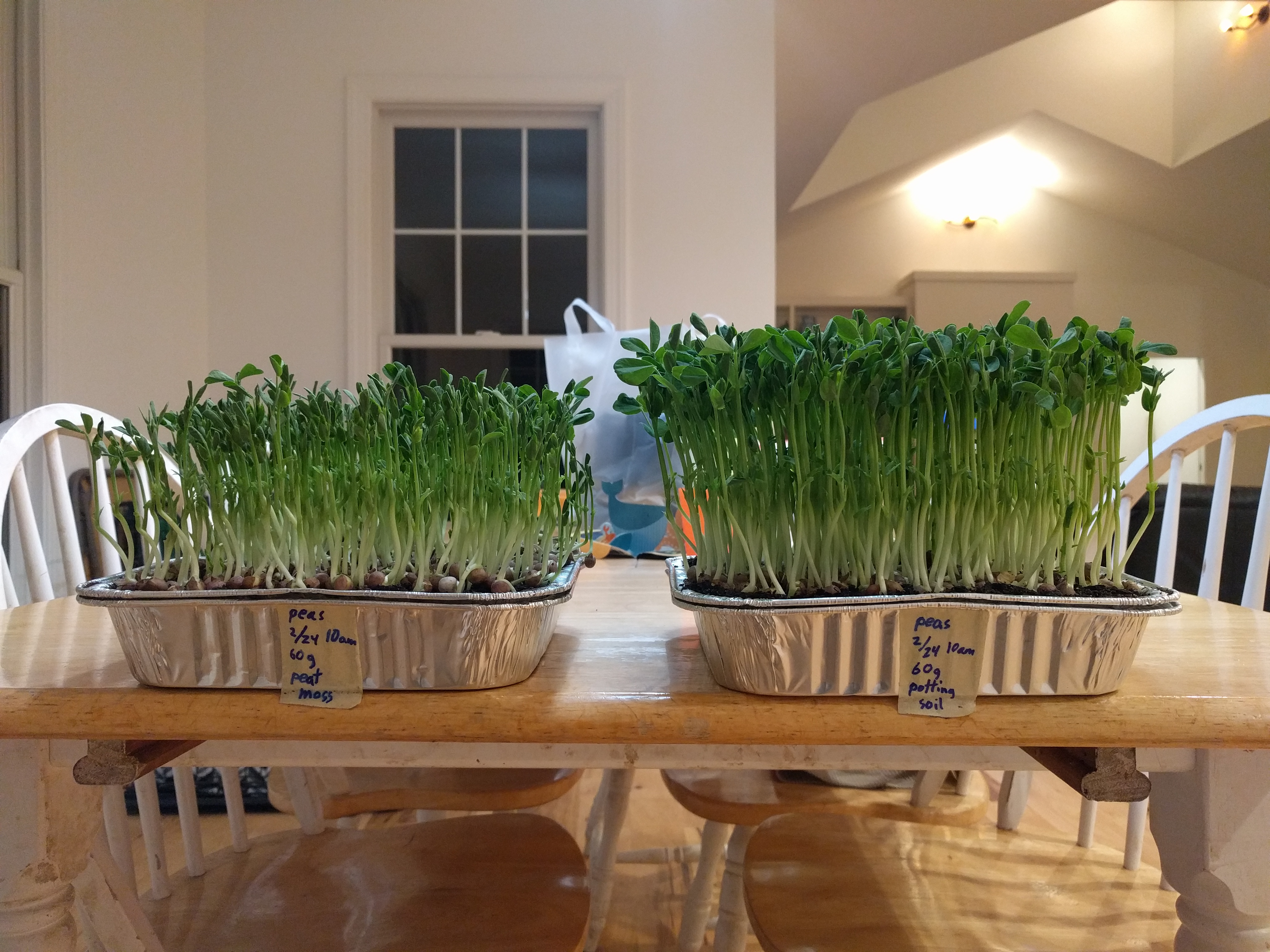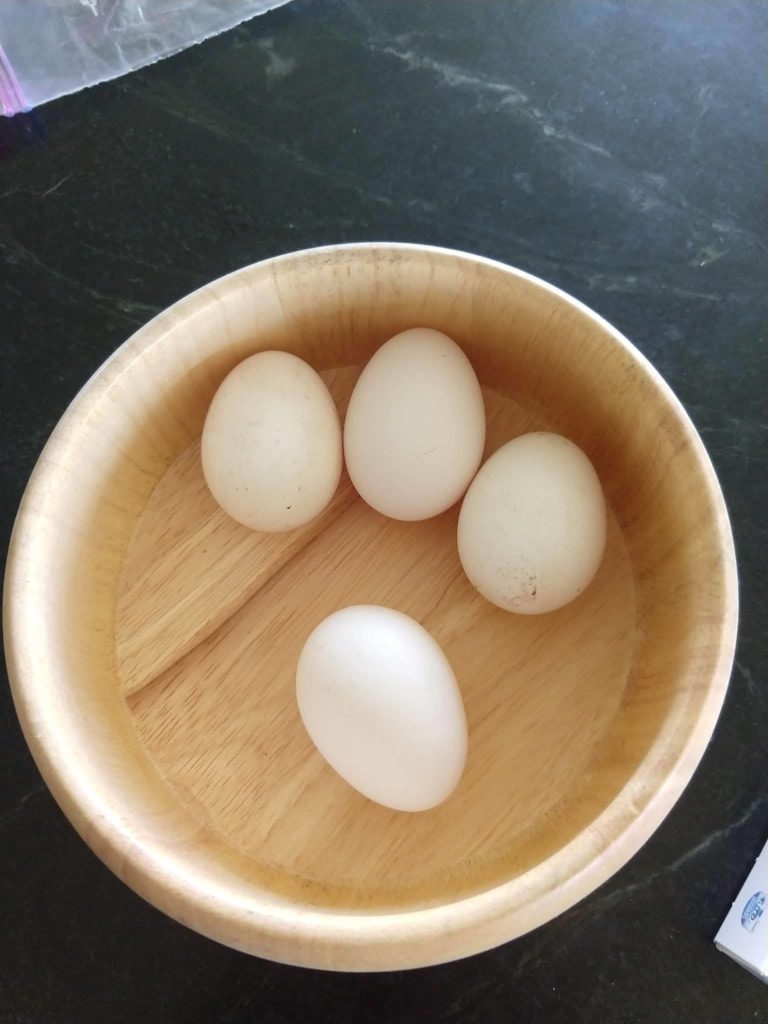
We got two nucs (pronounced “nukes”) of honeybees back on May 12. This is our first foray into beekeeping, but then again, most of these farming endeavors lately have been “firsts” for us. With the bee thing, this is 100% Elissa. She took a beekeeping class for a couple months earlier this year and scoped out and purchased all the necessary materials, etc. So far so good. Our understanding is that the bees will spend roughly the first year building up their hives and stocking them with honey… eventually generating surplus honey in the second year (ie more honey than they’d need to get through winter). So for now, we just make sure to supply them with sugar water (simple syrup) to supplement their pollen intake and do weekly status checks on the hives, like Elissa is doing in the photo, to make sure there aren’t any issues (mites, signs of swarming, etc).









